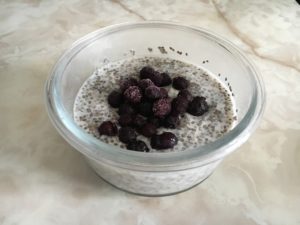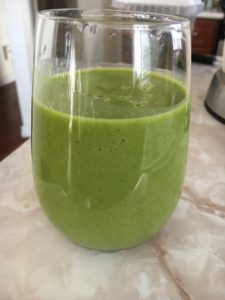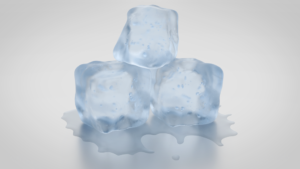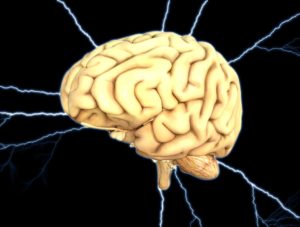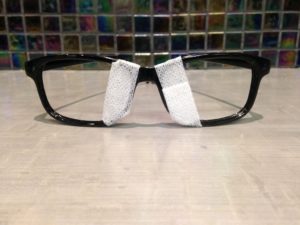One of the most common questions as a physiotherapist that I receive is how did my injury occur? That is truly the million dollar question. There are multiple answers for this. There are situations where we can pin point the cause of the injury and there are other instances that we are just unable to find one direct cause for the problem. Truly, I do feel that the answers lie within you as to why this injury may have occurred. Some people will say to me, “I don’t know why I have this problem, but it feels like, maybe the gardening that I was performing the other day may have triggered it.” If your gut is telling you this, then you very well might be right. We all know that there are 24 hours in a day. It is estimated that the human brain has anywhere from 25,000 to 50 000 thoughts per day, with a high percentage of those thoughts not being positive. There are no stats to my knowledge that state the exact number of physical movements that humans perform throughout the day. If the mind has that many thoughts per day, then naturally the human body must go through a tremendous amount of physical movements per day. If there are that many movements that the human body makes per day then you yourself are the best individuals, who truly know what could have triggered your injury. Just listen to what your body is telling you.
Our roles as health care professionals are to diagnose your injury and to move forward as to what we can do to get it better. There are also many times, where we can pin point an exact cause due to a traumatic event, such as a fall or a sports injury. Sometimes the injury can be due to a repetitive strain injury, which could have been going on for a significant time period until the body can no longer cope with it.
We know that the human body is not just physical. There is also a huge emotional connection to the body that can trigger certain physical problems. We may not know exactly how this works or what emotion triggers what, but I believe that certain emotions such as anger, fear, guilt, anxiety, sadness, which are one of the more common emotions can manifest as different conditions. Maybe if somebody is going through a major decision in ones life, such as making a life changing move and they are feeling anxiety due to this, its quite possible that this could trigger a physical response/symptom in the body. From my personal clinical experience, I have seen a case where an individual was weighing decisions on whether to relocate to another country. At the same time a mysterious knee pain started. Physically we couldn’t pin point whether this was ligament, tendon or meniscus. Every test performed was negative. There was general pain but we were unable to locate what the source of this pain was. They ended up making the decision to move abroad. Once they settled in their new home in another country, their knee pain a short time later went away. I also had patients say to me that when they were away on vacation, their physical symptoms felt great and when they returned home, they started to feel the pain again. Could it be that their emotional state had shifted to one that was full of joy and excitement and letting go from all the financial, employment and social responsibilities back home? Could ones emotional state be one of the causes of the physical pain? Its quite possible. This is not to imply that this is 100% of the source of pain. Nobody knows the exact percentage that emotions are causing their physical pain. However, emotions can be part of the cause. If we let go of some of these emotions and try to stay in a place of gratitude and joy maybe our bodies will begin to feel better. What is the harm in shifting your mindset? Its not going to cost anything. Its simply free. Its very easy for me to say let some of your negative emotions go. I have learned all too well that you cannot run away from the things that create those negative emotions in life. When you do run away from those problems life has a way of sending those problems back to you until you learn how to deal with it. The focus of this specific blog is not on treatment as we will get into that on another blog, however, there are some good strategies to help release these emotions. Meditation, which can be guided or just being still and present in the moment can help. A yoga class, whether its hot or not, is another great way to release emotions through different body movements. If none of these resonate well with you then find an activity that makes you feel good, whether its a sport, exercising, riding a bike or maybe an adult colouring book. These are just a few and there are many others that we can discuss later.
Are we overworked and unhappy in North America? I clearly think this is the case with a lot of people. Just how many are feeling this way? I feel there may be a high number but nobody really knows the exact number.
There are other many causes for one’s physical symptoms, such as certain mineral deficiencies. Magnesium and Vitamin D are both important. Magnesium is the 4th most abundant mineral in the body. It is an electrolyte and deficiencies in Magnesium is what leads to muscle cramping with individuals and athletes. Could the muscle tightness and spasms that are causing your pain be related to a deficiency in Magnesium? Its quite possible. Magnesium plays a significant role for the health the well being of our bodies.
The Journal of the American College of Nutrition stated the following
“Similarly, patients with diagnoses of depression, epilepsy, diabetes mellitus, tremor, Parkinsonism, arrhythmias, circulatory disturbances (stroke, cardiac infarction, arteriosclerosis), hypertension, migraine, cluster headache, cramps, neuro-vegetative disorders, abdominal pain, osteoporosis, asthma, stress dependent disorders, tinnitus, ataxia, confusion, preeclampsia, weakness, might also be consequences of the magnesium deficiency syndrome.”
I suggest listening to your body. If your muscles are feeling tight, maybe try to take a magnesium supplement but always check with your health care professional or doctor to make sure it is safe and you are taking the proper dosage.The dieticians of Canada states that you should consume less than 350 mg of Magnesium per day.
Vitamin D is often called the ‘sunshine’ vitamin, as our skin is able to make the vitamin when exposed to the sun. Vitamin D is best known for its role in keeping bones and teeth healthy. Recent research suggests that vitamin D may also have benefits in fighting infections, reducing heart disease risk factors, and preventing diabetes, multiple sclerosis, and some types of cancers (especially colorectal cancer). However, more research is needed to fully understand the role of vitamin D in these conditions. Several studies have suggested an association between chronic pain and vitamin D deficiency. One study found low vitamin D serum levels to be associated with chronic tension type headaches. Another recent study, referenced below found that in clients with Fibromyalgia, low vitamin D levels, affected their balance and negatively affected their pain ratings. This is not implying that you should immediately increase your Vitamin D levels as too much is not good either. This is a suggestion that there could be a correlation between your pain and low vitamin D levels. I would suggest getting tested first or maybe get some natural sunshine and see how you feel with respect to your pain levels.
We also know that 70% of our body is made of water and 80% of our brain is made up of water. Our bodies are similar to the makeup of our earth as the earth is composed of 70% water. We as a population do not have enough water intake for our bodies. However, some individuals are drinking too much. Drinking too much could flush out some of the minerals and electrolytes that our body requires. Trying to drink too much water to lose weight is a trend that I see and it is not the ideal way to go about it. When I talk to clients, I find that the majority of them are drinking too little. The general rule to determine how much water you should be drinking is to take half of your body weight and divide that number by 8, which tells you how many glasses of water you should be drinking per day.
Why is this important? If there is an injury within a muscle and we know that 70% of it is made up of water, then isn’t it natural to help assist the healing process by drinking a sufficient amount of water?
I would also suggest drinking filtered water or reverse osmosis filtered water that does not have fluoride and chlorine in it.
There are times we can pin point the cause of the injury. Majority of the time a lot of our injuries are due to a repetitive strain injury. The body does some amazing things but it wasn’t designed to keep doing the same activity over and over again. I see a lot of injuries occurring from working too long in one position, whether its sitting at a desk in front of the computer or performing some specific manual job over and over again. If you are passionate about your job that is great, but there still needs to be a balance in how you perform your job. If you have a desk job, the general rule is to try to change positions by getting up from that position every 20-30 minutes. Get up, walk around and just move. Posture is important too. Maybe there needs to be an ergonomic assessment performed to determine if the chair, desk and computer is at the right height based on the size of your body.
I have seen a lot of injuries due to improper positions at a desk, which can lead to shoulder, neck, elbow and low back strains. This doesn’t have to cost a lot. Short term costs lead to long term success and better productivity. Once again I will save treatment options for these issues for a later blog.
In summary, there are multiple answers for the question “How did I develop this injury?” Hopefully this sheds some light that answering this question is not always straight forward. I hope you will take something away from this to use to your advantage.
Until next time keep smiling and having fun.
Sacha Bhandal
REFERENCES:
1) Oxford Journals – Magnesium Basics: http://ckj.oxfordjournals.org/content/5/Suppl_1/i3.full
2) Journal of the American College of Nutrition http://www.easy-immune-health.com/support-files/misdiagnosis-magnesium-deficiency.pdf
3)https://www.dietitians.ca/Your-Health/Nutrition-A-Z/Minerals/Food-Sources-of-Magnesium.aspx
4)https://www.dietitians.ca/Your-Health/Nutrition-A-Z/Vitamins/Vitamin-D–What-you-need-to-know.aspx
5) Kasapoglu Aksoy M, Altan L, Okmen Metin B. The relationship between balance and vitamin 25 (OH) D in fibromyalgia patients.Mod Rheumatol. 2016 Dec 9:1-7.
6) Prakash S, Rathore C, Makwana P, Dave A, Joshi H, Parekh H. Vitamin D Deficiency in Patients With Chronic Tension-Type Heaches: A Case Control Study.Headache. 2017 May 3.


